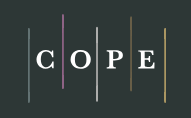Painting in the Expanded Field
Keywords:
Painting, Field, Pluralism, Greimas, HistoryAbstract
The present essay examines the historical and logical conditions of the existence of painting as an expanded field. After developing the concept of pluralism, the expanded field of painting is presented through the use of the Greimas rectangle. This expanded field incorporates the notions of originality / reproducibility, multidimensional related spaces, and history and chronology. The resulting field relates painting to other artistic manifestations previously seen as different or even opposed to it in today's society and makes it possible to re-invest in the medium with the characteristics that it has lost or gave away throughout time. The expanded field also allows to examine transformations and movements in more than one dimension at the same time, changes from one expressive form to another, from one object to another, and still allows for the possible addition of other artistic manifestations related to the expanded field.
References
Arnheim, Rudolf. New Essays on the Psychology of Art. California: University of California Press, 1986.
Augé, Marc. Non-places: Introduction to an Anthropology of Supermodernity. London: Verso, 1995.
Belting, Hans, Andrea Buddensieg, and Peter Weibel. The Global Contemporary and the Rise of New Art Worlds. Germany: ZKM, 2013.
Bryson, Norman. Looking at the Overlooked: Four Essays on Still Life Painting. Cambridge, Mass.: Harvard University Press, 1990.
Candela, Ira, ed. Lucio Fontana. On the Threshold, (New York: The Metropolitan Museum of Art, 2019.
Casid, Jill H., and Aruna D'Souza. Art History in the Wake of the Global Turn. New Haven: Yale UP, 2014.
Crary, Jonathan. Techniques of the Observer. On Vision and Modernity in the Nineteenth Century. Cambridge: MIT Press, 1991.
Danto, Artur C. The Transfiguration of the Commonplace: A Philosophy of Art. Harvard: Harvard University Press, 1983.
Edgerton, Samuel. The Renaissance Rediscovery of Linear Perspective. New York, 1976.
Foster, Hal. "The Problem with Pluralism." En John R. Lane and John Caldwell 1985 Carnegie International, (Pittsburgh: Museum of Art, Carnegie Institute, 1985), pp. 50-57.
Gielen, Pascal, ed. Institutional Attitudes: Instituting Art in a Flat World. Amsterdan: Valiz, 2013.
Hertz, Richard. Theories of Contemporary Art. New Jersey: Prentice Hall, 1993.
Hicks, Alistair. The Global Art Compass. New Directions in 21st-century Art. Farnborough: Thames & Hudson, 2014.
Jameson, Fredric. The Political Unconscious. Narrative as a Socially Symbolic Act. Ithaca: Cornell UP, 1981.
Kelly, Michael. A Hunger for Aesthetics: Enacting the Demands of Art. New York: Columbia UP, 2012.
Koselleck, Reinhart. Futures Past: On the Semantics of Historical Time. Cambridge, MA: MIT, 1985.
Krauss, Rosalind. "Sculpture in the Expanded Field." En Richard Hertz Theories of Contemporary Art, (New Jersey: Prentice Hall, 1993), pp. 215-224.
Kubler, George. The Shape of Time: Remarks on the History of Things. New Haven: Yale UP, 1962.
Lobel, Michael. "Van Gogh’s Contemporaneity." Art in America (May 2014), pp. 116-123.
Morgan, Robert. Duchamp y los artistas contemporáneos posmodernos. Buenos Aires: EUdeBA, 2000.
Moxey, Keith P. F. Visual Time: The Image in History. Durham: Duke UP, 2013.
Plagens, Peter. "Cool Curating." Art in America
(January 2013), pp. 41-44.
Rédei, L. Foundation of Euclidean and Non-Euclidean Geometries According to F. Klein. Oxford: Pergamon Press, 1968.
Rotman, Brian. Becoming Beside Ourselves. The Alphabet, Ghosts, and Distributed Human Being, Durham, Duke University Press, 2008.
Rush, Michael. "New Media Rampant." Art in America
(July 2000): 41- 43.
Sirató, Charles Tamkó. Dimensionist Manifesto. Paris 1936.Retrieved 24 March 2013.
Sontag, Susan. On photography. New York: Farrar, Straus and Giroux, 1977.
Storr, Robert. "An Interview with Ilya Kabakov." Art in America (January 1995), pp. 60-69 y125.
Weschler, Lawrence. True to life: 25 years of conversation with David Hockney. Berkeley: University of California Press, 2008.
Wood, Paul. Western Art and the Wider World. New Jersey: Wiley, 2013.
Downloads
Published
How to Cite
Issue
Section
License
Los artículos enviados al Comité Editor del Instituto de Historia del Arte, para ser publicados, los autores reservan su derecho de propiedad, pero otorgan a la Editorial los derechos de impresión y aceptan la difusión tanto en papel, como en internet y en aquellos sitios virtuales de las cuales los CHA formen parte.

Esta obra está bajo una Licencia Creative Commons Atribución-NoComercial-CompartirIgual 3.0 No portada


















_00.07_.55_2.png)





